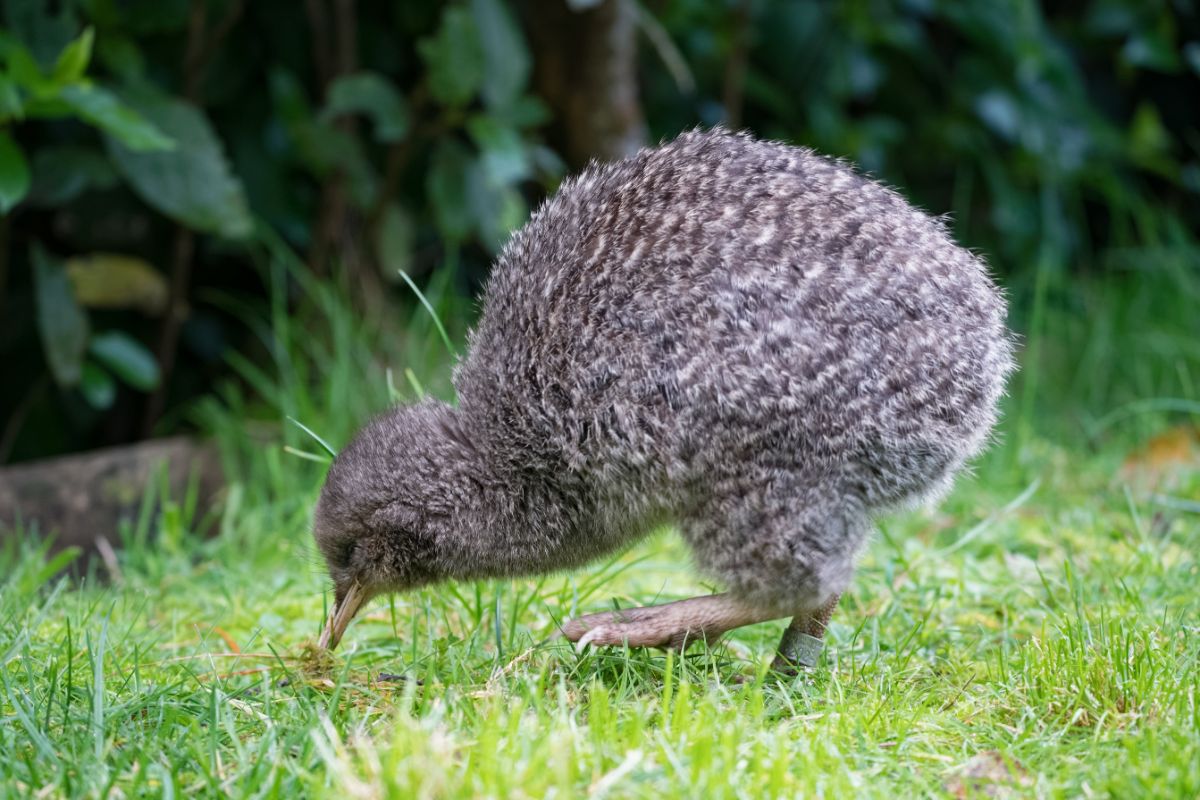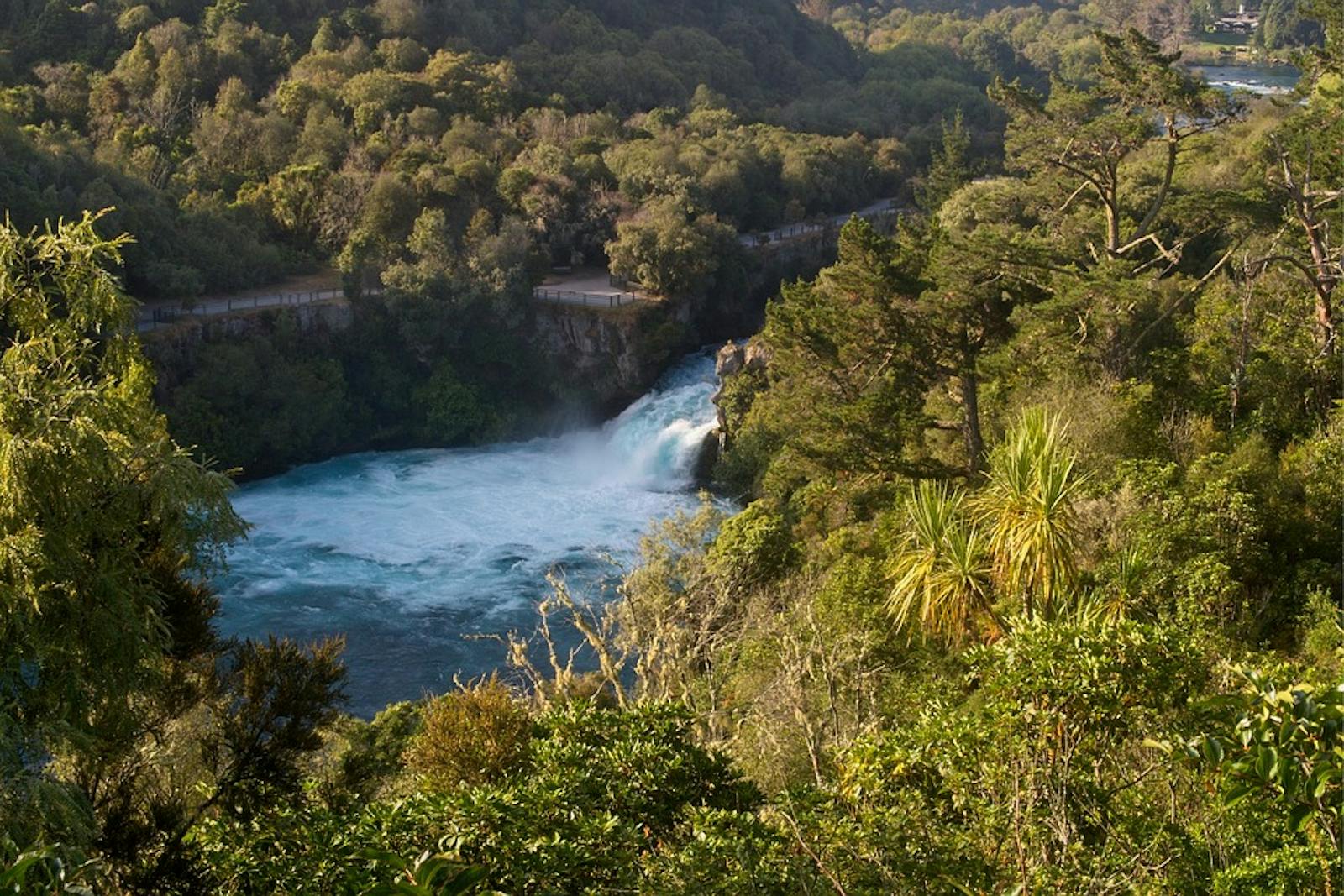New Zealand North Island Temperate Forests
The ecoregion’s land area is provided in units of 1,000 hectares. The conservation target is the Global Safety Net (GSN1) area for the given ecoregion. The protection level indicates the percentage of the GSN goal that is currently protected on a scale of 0-10. N/A means data is not available at this time.
Bioregion: New Zealand (AU1)
Realm: Australasia
Ecoregion Size (1000 ha):
8,461
Ecoregion ID:
171
Conservation Target:
37%
Protection Level:
5
States: New Zealand
Prior to the arrival of humans, New Zealand’s largest wildlife were nine species of moa, large ostrich-like birds that browsed vegetation and were preyed upon by the enormous Haast eagle. All are extinct today due to human hunting, but remnants of the vast North Island forests still retain much of the unusual biodiversity of New Zealand. Large ground snails, giant weta (giant flightless crickets), liquid-songed birds, giant trees, ground-feeding bats, and, once, giant moas and eagles inhabited these globally unique forests.

The flagship species of the New Zealand North Island Temperate Forests is the Kokomo. Image credit: Flickr, David Cook (CC by 2.0 DEED)
Much of New Zealand’s flora is unique, roughly 80 percent is endemic, though the island’s linkages with the ancient supercontinent of Gondwanaland is echoed in the 20 or so species with close relatives in South America and Southern Ocean islands and many others with links to Australia. In the temperate forests of the North Island, dense podocarp and mixed beech/podocarp forests covered lower elevation landscapes. Common species include mountain beech (Northofagus solandri cliffortioides), kamahi (Weinmannia racemosa), tawa (Beilschmiedia tawa), rimu (Dacrydium cupressinum), Hall’s totara (Podocarpus hallii), and kaikawaka (Libocedrus bidwillii), leatherwood (Olearia colensoi), mangeao (Litsea calicaris), and the long-leaved neinei (Dracophyllum laxifolium). Low-growing kanuka (Kunzea ericoides microflorum) grows only in geothermal areas. Mires and swamps have a rich flora (an estimated of more than 260 species) and vast swamps once supported extensive stands of flax (Phormium tenax). Tussock grasslands and herbfields are found at higher volcano elevations, such as Mt. Taranaki and Mt. Ruapehu. Spinifex (Spinifex sericeus) and pingao (Desmoschoenus spiralis) occur on dunes along coasts and floodplains.

Little spotted kiwi. Image credit: Wikipedia, Judy Lapsley Miller (CC by 4.0)
New Zealand has 110 species of lizards, but all are skinks and geckos, both taxa notable for their dispersal abilities to oceanic islands (tuataras are not lizards). All are endemic to New Zealand. Species include Whitaker’s skink (Cyclodina whitakeri), forest gecko (Hoplodactylus granulatus) and the common green gecko (Naultinus elegens punctatus). The New Zealand biota evolved without terrestrial mammals. The lack of mammalian predators enabled the two endemic small tailed bats (Mystacina tuberculate and Chalinolobus tuberculatus) to forage crawling in the leaf litter. Kapiti Island harbors the largest population of little spotted kiwi (Apteryx owenii) in the country, along with other bird species such as takahe (Porphyrio mantelli hochstetteri) and stitchbirds (Notiomystis cincta). North Island kōkako (Callaeas wilsoni) and North Island saddleback (Philesturnus rufusater) are two beautiful endemic songbirds that still occur on some forests and offshore islands. Endemic landsnails are diverse and some attain very large sizes, such as species of Powelliphanta.
Four national parks protect much of the remaining forest―Tongariro, Egmont, Whanganui, and Te Urewera. Only Whanganui conserves larger blocks of lowland forest. Dunes, wetlands, mires, and geothermal habitats require more protection. Wildfires and invasive weeds and animals are currently the major threats to native species and habitats. Rats, possums, and stoats prey heavily on native birds and invertebrates, as well as damage native plants. Introduced deer, goats, and horses browse and trample native vegetation. Human-caused wildfires remain a major threat to native vegetation poorly adapted to frequent fire.
Priority conservation actions for the next decade
- Strengthen efforts to control predators in and around key biodiversity areas, such as the efforts of Predator Free Taupo project.
- Continue efforts to establish viable populations of threatened birds, reptiles, and invertebrates on protected offshore islands through predator-free management and restoration efforts.
- Expand protection of underrepresented native habitats, such as dunes, mires, geothermal habitats, and wetlands, on public and privately-owned conservation areas.
-
-
- Department of Conservation. 1994. Draft Conservation Management Strategy for Tongariro/Taupo Conservancy. Tongariro/Taupo Conservation Management Planning Series No 1. Turangi, New Zealand.
- Frimmel, S. 2020. New Zealand North Island temperate forests ecoregion. WWF-US, Washington, DC.
- Molloy, L. 1994. Wild New Zealand. New Holland Publishers. London, United Kingdom.
-
Cite this page: New Zealand North Island Temperate Forests. Ecoregion Snapshots: Descriptive Abstracts of the Terrestrial Ecoregions of the World, 2021. Developed by One Earth and RESOLVE. https://www.oneearth.org/ecoregions/new-zealand-north-island-temperate-forests/
-



